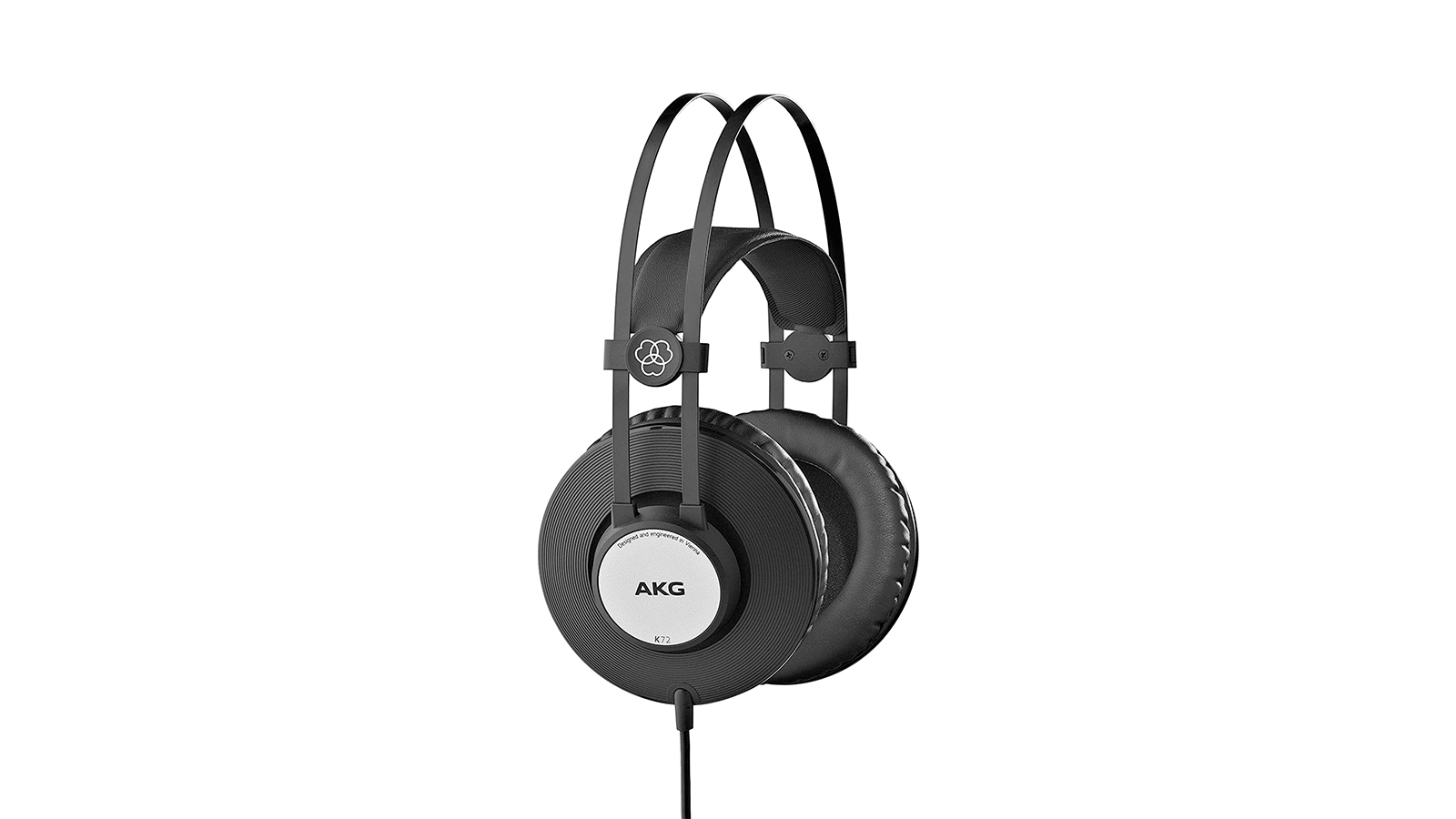MusicRadar Verdict
Despite the slightly vague and cloudy midrange, for the equivalent cost of a pair of inexpensive 'street' cans, the K72's offer a remarkably pro performance that threatens to knock Sennheiser’s HD206 off its 'best cheap studio all-rounder' throne.
Pros
- +
Brilliant value
- +
Lightweight and comfortable
- +
Expansive sound
Cons
- -
Slightly coloured midrange
- -
Long cable is prone to tangling
MusicRadar's got your back
AKG K72 review: What is it?
AKG have been in the pro audio business for a long time, and as such are one of the undisputed champions of the studio headphone game, with a diverse model line-up that contains a wide range of headsets suitable for a variety of uses. One of the cheapest headsets on their roster, the K72 is an entry-level, closed-back headphone, primarily designed for home and studio use, that promises pro-level performance for peanuts - but does it actually deliver?
The K72 benefits from the same classic AKG dual rail headband design as the AKG K240 Studio, with one major difference - the two rails that form the arch connecting the ear cups are made from flat pieces of steel, giving these cans the edge in the durability stakes over the plastic rails found on the K240. Slung across the void within the arch is an adjustable nylon headband which, as you pull down on the ear cups to position them over your ears, uses the upward pressure generated by the top of your head to expand an internal elastic element, ensuring a snug yet comfortable fit. There’s the merest smidge of token padding on the underside of this inner band, but since its design means that it exerts barely any pressure on your scalp, the amount of padding here doesn’t adversely affect the result, which is a very comfortable pair of cans indeed.
The saucer-sized ear cups house 40mm neodymium drivers, as a result of which they're large enough to accommodate the biggest of ears without even blinking. Although the memory foam padding isn't the thickest or most luxurious we've seen, it is generously swathed in high-quality pleather, maintaining the comfort level still further. Should the pads prove unable to withstand the rigours of everyday studio use, it's good to know that the pads themselves are replaceable.
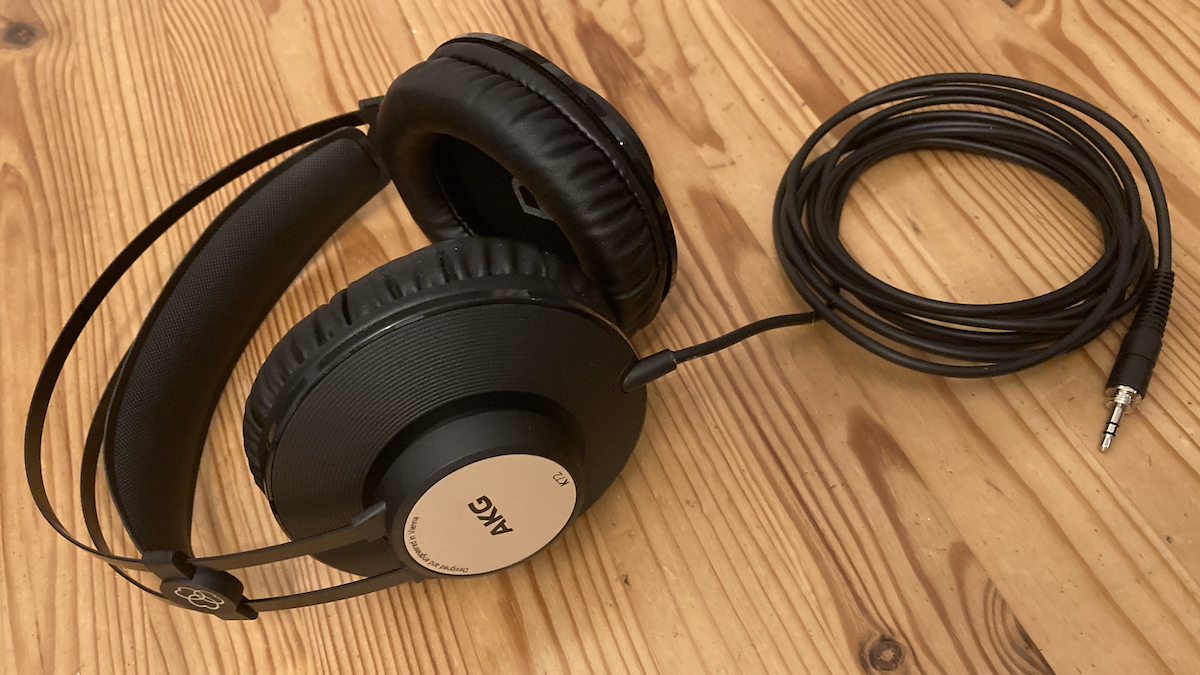
The outer faces of the ear cups feature concentric circular grooves, tightly packed around the silver central logo boss, giving them a unique and pleasantly tactile look reminiscent of a vinyl record. Unusually for a set of AKG cans, there's no logo on the headband to aid orientation, but a glance inside the ear cups reveals large white L/R markings printed on the mesh that covers the driver on each side, so there's little chance of putting these on back to front.
You get a single, 3m heavy-duty cable in the box, together with the standard 3.5mm - 6.3mm screw-on adapter. The cable is pretty thick and substantially weighty, and is also non-detachable, literally adding weight to the argument that these aren't the most portable of headsets. If you’re not a fan of long cables, it’s something you’re sort of stuck with - we did find that it was prone to sticking to itself and tangling up a bit in comparison to some of the thinner cables found on other budget studio headphones.
AKG K72 review: Performance & verdict
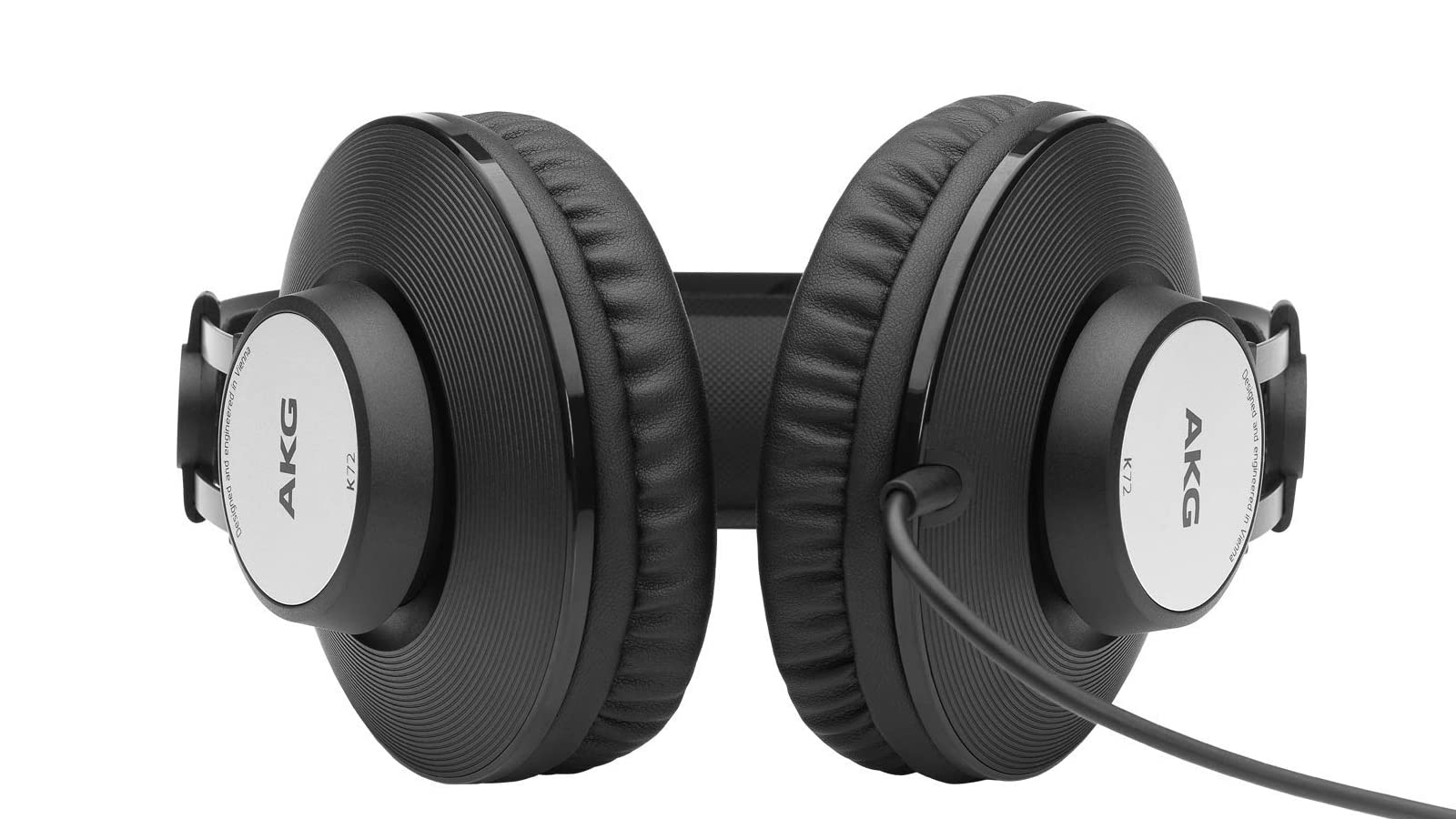
AKG are renowned for producing equipment for studio-related tasks, where the flatter the response the better the customer likes it. The K72 delivers a remarkable amount of oomph per pound, with a profile leaning more towards the flat, studio reference monitor end of the spectrum but delivering a listening experience that's entertaining and rewarding enough for most use cases.
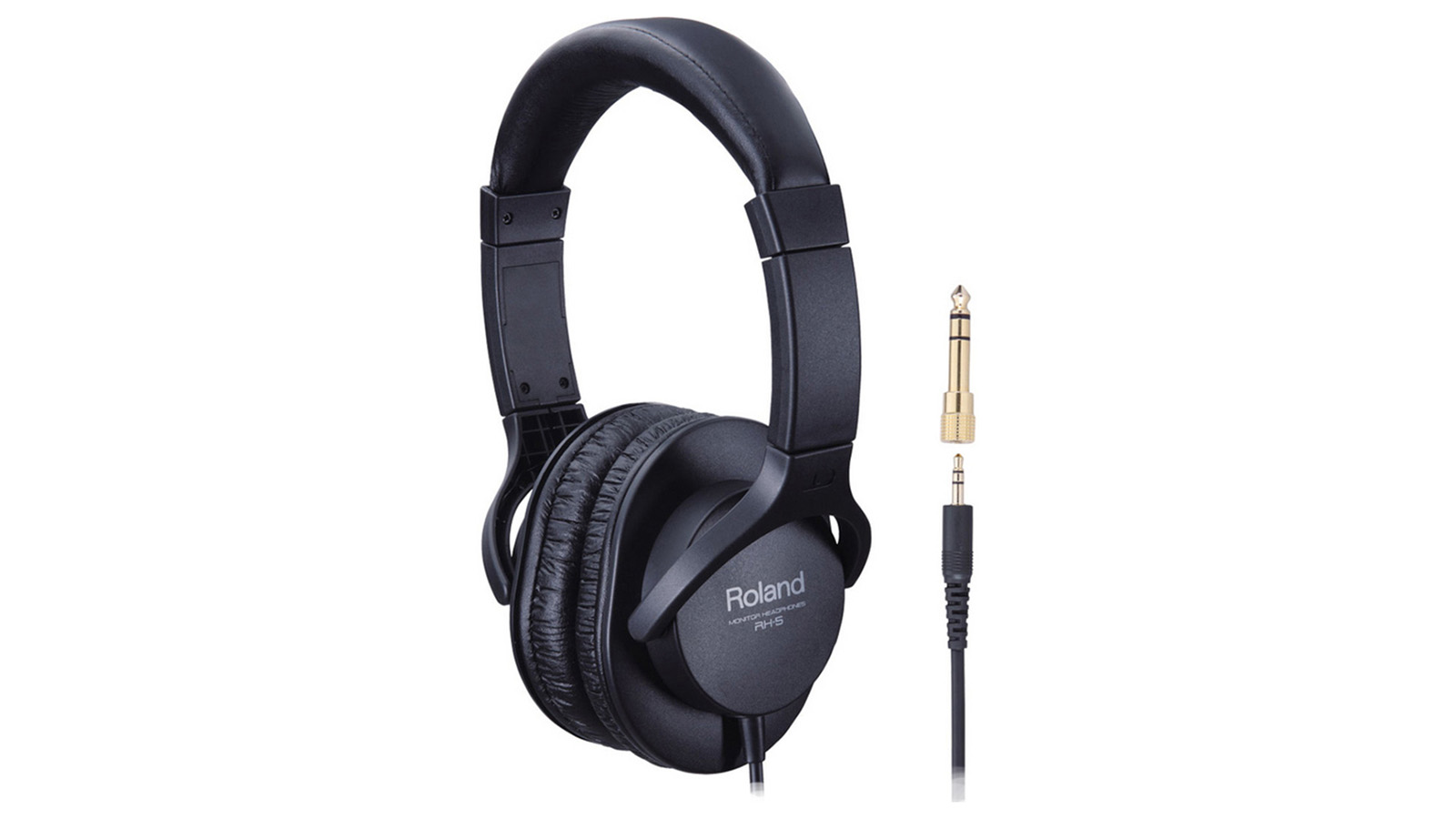
Roland RH5
Aimed at users of Roland digital pianos and electronic drum kits, these cans have a great sound for the money and are comfortable enough for all-round use.
Audio-Technica ATH-M20x
Outstanding and very affordable all-rounder closed-back studio headphone from Audio-Technica
Overall, the sound is taut, expansive and wide, with a low-end response that's sufficiently tight and not at all over-emphasized, combined with a high end that's detailed and precise. The midrange, however, we found to be a little constrained and somewhat boxy, particularly in the 1-2kHz region. In our listening tests, the strings and other orchestral instruments in Snarky Puppy’s ‘The Curtain’ seemed unusually congested to our ears, with a degree of harshness not usually present. Meanwhile, backing vocals on pop tracks like Dua Lipa’s ‘Levitating’ came across a little cloudier than we’re used to and the punchy rock drums of Mother Mother’s ‘Hayloft’ seemed somehow rather flattened-out and shiny.
Isolation from external noise isn't stellar for a pair of closed-back cans, but the upside of this is that they're extremely comfortable to wear for long periods. When it comes to adjusting the fit of the ear cups, there’s not a lot of movement in the horizontal or vertical planes, so when you turn your head with them on, the sides of the ear cups can lift away from the side of your head. We also found that the nylon inner headband was prone to occasionally inverting itself, leading us to have to check that it hadn’t swung upside down before putting the headset on.
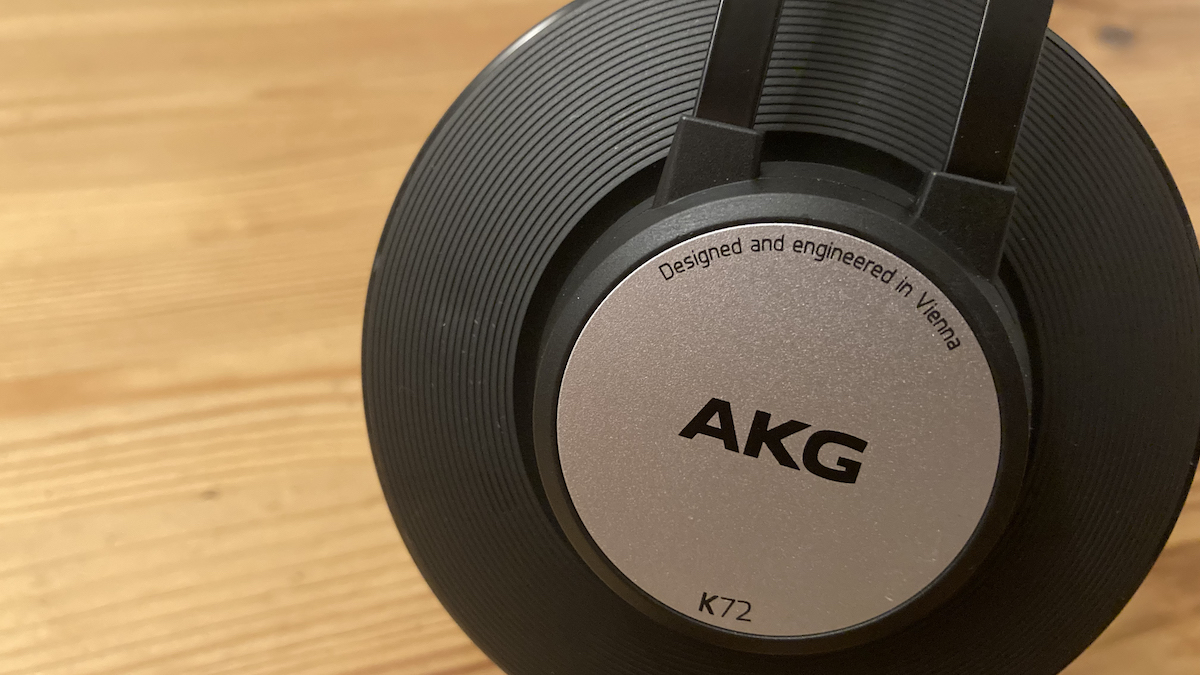
For such a bargain-basement headset, the K72 is actually pretty versatile. The low-impedance design - only 32Ω - means that they can be successfully used with multiple devices like laptops, mobile phones, tablets and home studio audio interfaces, serving up bucketloads of volume whatever you plug into without needing to be driven by a dedicated headphone amp. They fulfil a wide range of home and studio listening tasks with aplomb and are cheap enough for you to be able to have multiple pairs knocking around. We didn't really spend enough time with them to ascertain an exact idea of their long-term durability, but with cans as inexpensive as these it's not such a huge worry if they succumb to the rigours of everyday studio life.
Despite the slightly vague and cloudy midrange, for the equivalent cost of a pair of inexpensive 'street' cans, the K72's offer a remarkably pro performance that threatens to knock Sennheiser’s HD206 off its 'best cheap studio all-rounder' throne.
AKG K72 review: Specifications
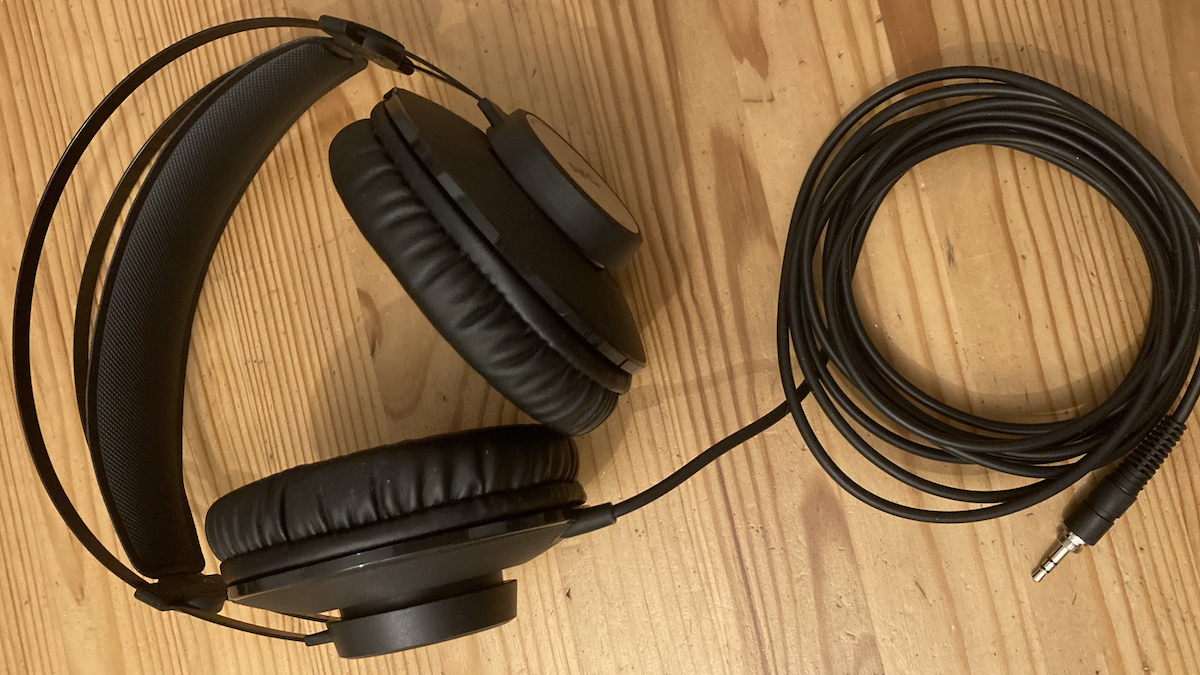
- Operating principle: Closed, dynamic transducer
- Type: Closed-back, circumaural
- Frequency response: 16Hz - 20kHz
- Impedance: 32Ω
- Driver size: 40mm
- Weight: 200g (without cable)
- Cable: Straight 3m, fixed
- Contact: AKG
Dave has been making music with computers since 1988 and his engineering, programming and keyboard-playing has featured on recordings by artists including George Michael, Kylie and Gary Barlow. A music technology writer since 2007, he’s Computer Music’s long-serving songwriting and music theory columnist, iCreate magazine’s resident Logic Pro expert and a regular contributor to MusicRadar and Attack Magazine. He also lectures on synthesis at Leeds Conservatoire of Music and is the author of Avid Pro Tools Basics.
“Excels at unique modulated timbres, atonal drones and microtonal sequences that reinvent themselves each time you dare to touch the synth”: Soma Laboratories Lyra-4 review
“I used everything I knew about music”: How Green Day exceeded expectations with their most ambitious song
YouTube just added AI tools that makes musicians, library music and video editors redundant
